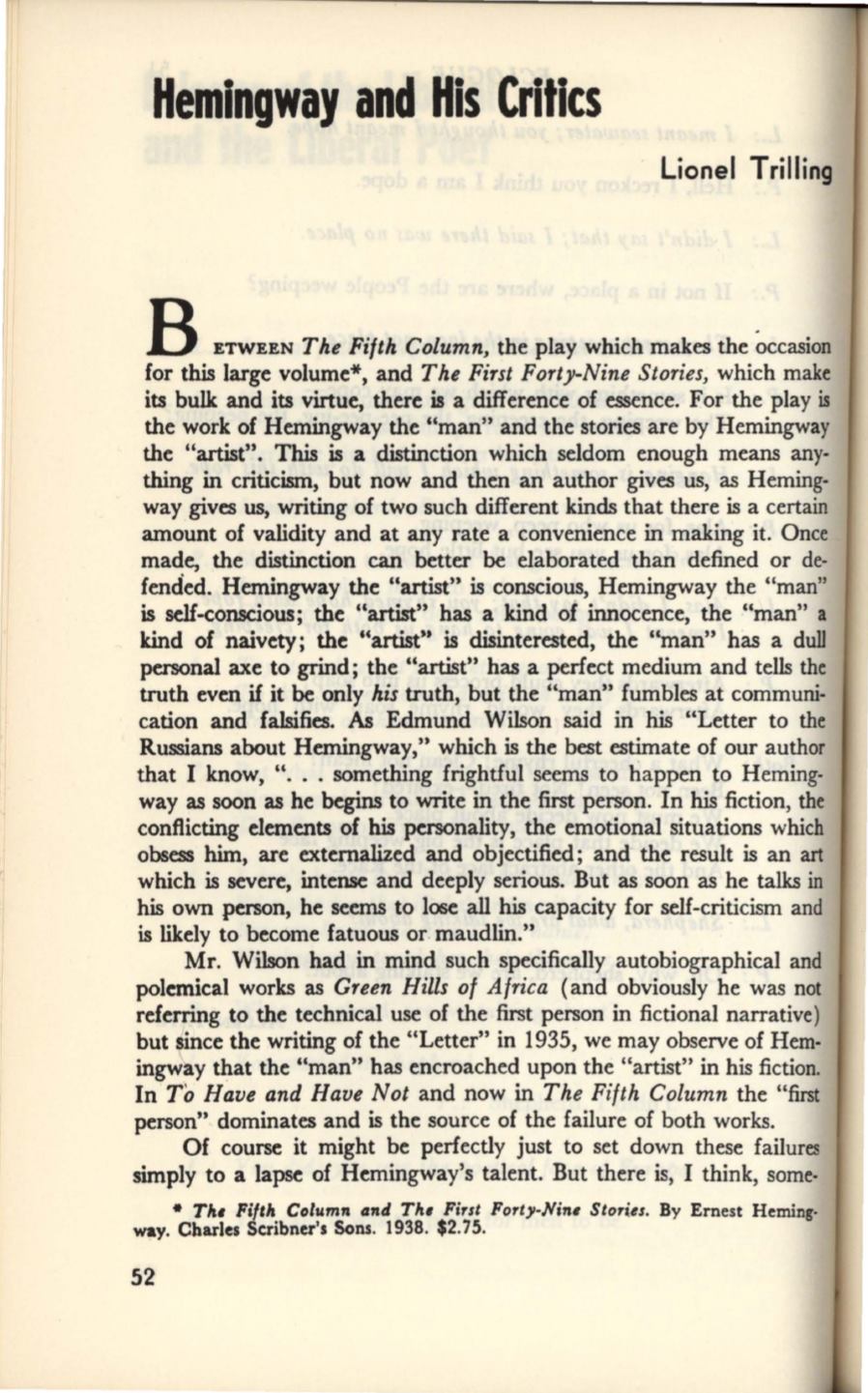
Hemingway and His Critics
Lionel Trilling
B
ETWEEN
The Fifth Column,
the play which makes the occasion
for this large volume*, and
The First Forty-Nine Stories,
which make
its bulk and its virtue, there
is
a difference of essence. For the play
is
the work of Hemingway the "man" and the stories are by Hemingway
the "artist". This is a distinction which seldom enough means any–
thing in criticism, but now and then an author gives us, as Heming–
way gives us, writing of two such different kinds that there is a certain
amount of validity and at any rate a convenience in making it. Once
made, the distinction can better
be
elaborated than defined or de–
fended. Hemingway the
"artist" is
conscious, Hemingway the "man"
is self-conscious· the
"artist"
has a kind of innocence the "man" a
,
,
kind of naivety; the "artist'' is disinterested, the "man" has a dull
personal axe to grind; the "artist" has a perfect medium and tells the
truth even
if
it
be
only
his
truth, but the "man" fumbles at communi–
cation and falsifies.
As
Edmund Wilson said in his "Letter to the
Russians about Hemingway," which is the best estimate of our author
that I know, "... something frightful seems to happen to Heming–
way as soon as he
begins
to write in the first person. In his fiction, the
conflicting elements of his personality, the emotional situations which
obsess
him,
are externalized and objectified; and the result is an art
which is severe, intense and deeply serious. But as soon as he talks in
his own person, he seems to lose all his capacity for self-criticism and
is likely to become fatuous or maudlin."
Mr. Wilson had in mind such specifically autobiographical and
polemical works as
Green Hills of Africa
(and obviously he was not
referring to the technical use of the first person in fictional narrative)
but since the writing of the "Letter" in 1935, we may observe of Hem–
ingway that the "man" has encroached upon the "artist" in his fiction.
In
T'o Have and Have Not
and now in
The Fifth Column
the "first
person" dominates and is the source of the failure of both works.
Of course it might be perfectly just to set down these failures
simply to a lapse of Hemingway's talent. But there
is,
I think, some·
•
Th1 Fifth Column and Th1 First Forty-Nin1 Stories.
By
Ernest Heming·
way.
Charles Scribner's Sons. 1938. $2.75.
52


